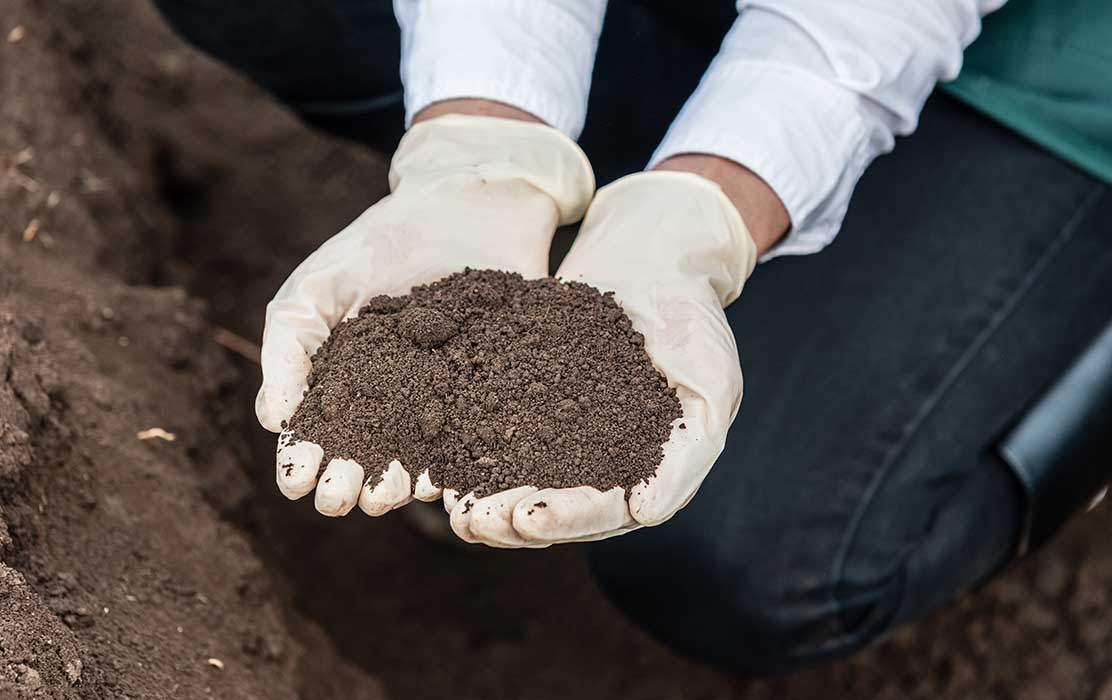Imagine a lush, vibrant lawn with flourishing plants and a harmonious ecosystem. What’s the secret behind this picturesque landscape? It’s all in the soil. Often overlooked, soil health is a crucial factor in successful landscaping. Without healthy soil, even the best-designed yards can struggle to thrive.
At Meadows Landscapes, we are dedicated to sustainable landscaping practices that prioritize soil health. Our commitment ensures not only beautiful landscapes but also environmentally friendly and resilient ecosystems. In this blog post, we’ll explore the importance of soil health in landscaping and provide practical tips on how to improve it.
Understanding Soil Health
What is Soil Health?
Soil health refers to the condition of soil in terms of its structure, fertility, and biological activity. Healthy soil is teeming with life, containing a balanced mix of minerals, organic matter, and living organisms such as earthworms, bacteria, and fungi. These components work together to create a supportive environment for plant growth.
Healthy soil boasts a stable structure with a good balance of air and water. Soil fertility is another key aspect, ensuring that the soil contains the necessary nutrients for plant growth. Biological activity is essential, as microorganisms in the soil help decompose organic matter and release nutrients that plants can absorb.
Why Soil Health Matters
Healthy soil is the foundation of a thriving landscape. It directly impacts plant growth, making it vital for landscaping aesthetics. When soil is in poor condition, plants may struggle to establish strong root systems, leading to weak and unhealthy growth.
Beyond plant growth, soil health plays a significant role in supporting local ecosystems and biodiversity. Healthy soil provides habitat and food for various organisms, contributing to a balanced and vibrant ecosystem. This biodiversity, in turn, helps maintain soil health, creating a positive feedback loop.
The Benefits of Healthy Soil in Landscaping
Enhanced Plant Growth
Healthy soil supports stronger root systems and more vibrant plants. Plants with healthy roots can access water and nutrients more efficiently, resulting in robust growth and increased resistance to environmental stressors. This means fewer wilting plants and more blooms in your garden.
Improved Water Retention and Drainage
One of the lesser-known benefits of healthy soil is its ability to manage water effectively. Healthy soil retains water well, reducing the need for frequent watering. At the same time, it promotes proper drainage, preventing waterlogging and reducing the risk of root rot.
By managing water effectively, healthy soil also helps reduce erosion. Properly structured soil holds together better, minimizing the loss of valuable topsoil during heavy rains.
Reduction in Need for Chemical Fertilizers
Nutrient-rich soil reduces dependency on synthetic fertilizers. Healthy soil naturally contains a balanced mix of essential nutrients, meaning you won’t need to rely as heavily on chemical fertilizers to keep your plants healthy. This not only saves money but also reduces the environmental impact of your landscaping practices.
Increased Resilience to Pests and Diseases
Healthy soil can naturally fend off common landscape issues like pests and diseases. A diverse and balanced soil ecosystem supports beneficial organisms that help control pests and diseases, reducing the need for chemical interventions. This leads to a healthier and more sustainable landscape overall.
Assessing Soil Health
Visual Indicators of Soil Health
Assessing soil health begins with simple visual inspections. Look for signs like soil texture, color, and organic matter content. Healthy soil typically has a crumbly texture, rich dark color, and visible organic matter such as decomposed leaves or compost.
Soil Testing
Conducting a soil test is a more precise way to assess soil health. Soil tests measure pH levels, nutrient content, and other important factors. You can purchase soil testing kits or send samples to a laboratory for detailed analysis. Results from these tests provide valuable insights into your soil’s condition and help guide your improvement efforts.
Testing should be done regularly, ideally every 2-3 years, to monitor changes and address any issues promptly. Regular testing ensures that your soil remains healthy and capable of supporting vibrant plant growth.
Strategies to Improve Soil Health
Organic Matter and Compost
Adding organic matter and compost to your soil is one of the best ways to improve its health. Organic matter improves soil structure, fertility, and water retention. Compost adds valuable nutrients and increases biological activity.
To incorporate compost effectively, spread a layer of compost over your soil and mix it in well. This can be done annually or as needed to maintain soil health.
Cover Crops and Mulching
Cover crops are plants grown primarily to improve soil health. They prevent erosion, add nutrients, and improve soil structure. Common cover crops include clover, rye, and legumes.
Mulching involves spreading organic materials like straw, wood chips, or grass clippings over the soil surface. Mulch protects soil from erosion, retains moisture, and adds organic matter as it decomposes. Effective mulching techniques include applying a 2-3 inch layer of mulch and replenishing it as needed.
Soil Aeration
Improving soil aeration reduces compaction and allows roots to access air, water, and nutrients more easily. Soil aeration can be achieved through various techniques, such as mechanical aeration with tools like garden forks or aerators, or by incorporating organic matter.
Different types of soil require different aeration methods. For example, clay soil may benefit from more frequent aeration, while sandy soil may not need it as often.
Proper Water Management
Efficient irrigation is crucial for maintaining soil health. Overwatering can lead to waterlogged soil and root rot, while underwatering can stress plants and reduce soil fertility. Using drip irrigation or soaker hoses can help deliver water directly to plant roots, reducing water waste and promoting healthier soil.
Avoiding Soil Degradation
Preventing soil degradation is essential for long-term soil health. Practices to avoid include excessive tilling, which can disrupt soil structure, and the overuse of chemical fertilizers, which can harm beneficial soil organisms. Implementing crop rotation, planting cover crops, and using organic fertilizers can help prevent degradation and maintain healthy soil.
Landscaping by Meadows Landscapes
At Meadows Landscapes, we understand the importance of healthy soil in creating beautiful and sustainable landscapes. Our team is committed to practices that promote soil health, such as incorporating organic matter and practicing proper water management. By creating a balanced soil ecosystem, our landscaping services help support vibrant plant growth and contribute to overall ecosystem health.
Join us in our mission to create healthier and more resilient landscapes by choosing Meadows Landscapes for your next landscaping project. Contact us today for all your landscaping needs!



